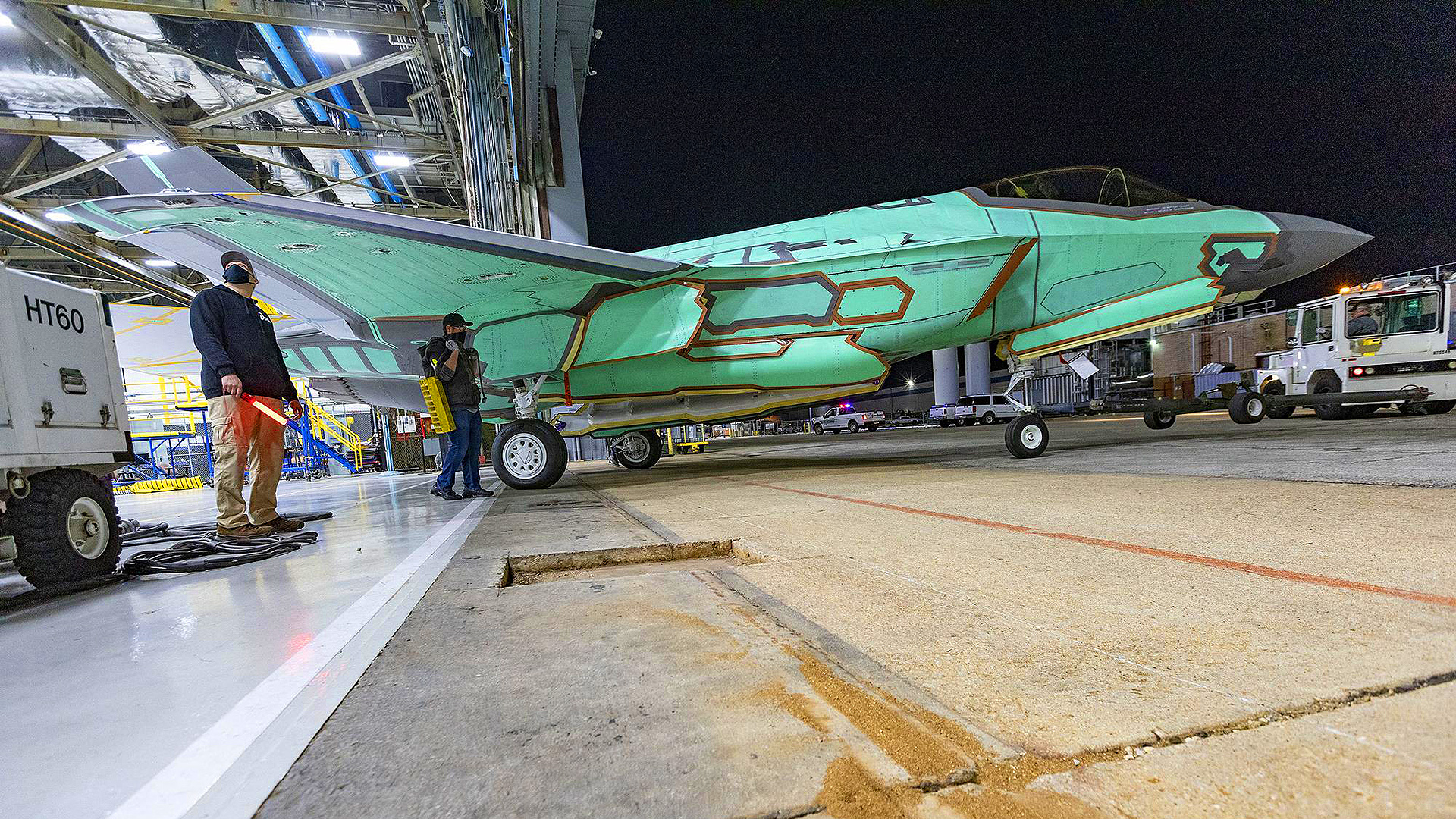The delivery of F-35A Lightning II Joint Strike Fighter jets has been placed on hold by the Pentagon after officials learned that a component contained materials produced by the People’s Republic of China.
UPDATE: We have a new story on this issue that you can read here once you get up to speed with the current article.
The component, a magnet used in F-35 turbomachine pumps, “does not transmit information or harm the integrity of the aircraft and there are no performance, quality, safety, or security risks associated with this issue,” Russell Goemaere, a spokesman for the F-35 Joint Program Office (JPO) said in a statement.

Neither flight operations for the F-35 in-service fleet, nor the production of the aircraft by manufacturer Lockheed Martin have been affected. However, the use of Chinese-made products in the world’s most advanced combat jet raised enough concerns for the Pentagon on Aug. 31 to order deliveries of the aircraft temporarily halted for an as-yet-unknown period.
To date, the delivery pause has affected delivery of only three F-35s, Laura F. Siebert, a Lockheed Martin spokesperson, told The War Zone. She declined to say where those jets were supposed to go.
Investigations are now underway to determine how this happened and how to avoid it from happening in the future.
The pause was first reported by Bloomberg.

“On Aug. 19, the Defense Contract Management Agency (DCMA) notified the F-35 Joint Program Office that an alloy in magnets used in F-35 turbomachine pumps is potentially in non-compliance with Defense Federal Acquisition Regulations Supplement (DFARS), as the alloy was produced in the People’s Republic of China,” Goemaere said. “Defense contractors voluntarily shared information with DCMA. Based on the additional information, the F-35 JPO temporarily paused the acceptance of new F-35 aircraft to ensure the F-35 program’s compliance to DFARS pertaining to specialty metals.”
The magnet on the F-35 Turbomachine, manufactured by Honeywell, includes cobalt and samarium alloy that was recently determined to be produced in China, according to Lockheed Martin. This alloy is magnetized in the United States.

The turbomachine is part of the Integrated Power Package (IPP) – the primary component of the power and thermal management system, Siebert said. The IPP supplies electrical power to start the engine and supplies conditioned bleed air for cooling aircraft systems.
The turbomachine integrates the functionality of an auxiliary power unit (APU) and an air cycle machine (ACM) into a single piece of equipment. When the turbomachine acts as an APU (combusted mode), it provides electrical power for ground maintenance, main engine start, and emergency power. It also provides compressed air for the thermal management system during ground maintenance.
On Sep. 2, the F-35 JPO received a formal disclosure about the DFARS non-compliance for the alloy used in the magnets, Goemaere said. “Further investigation is underway to understand the causal factors for the non-compliance and to establish corrective action.”

Contractors “have found an alternative source for the alloy that will be used in future turbomachines,” he said.
“We are working with our partners and DoD to ensure contractual compliance within the supply chain,” Siebert, the Lockheed Martin spokesperson, said in a statement. “The magnet has no visibility or access to any sensitive program information. The F-35 remains safe for flight, and we are working with the DoD to resolve the issue as quickly as possible to resume deliveries.”
Siebert said that in late August, Honeywell notified Lockheed Martin that alloy sourced from China is used in a magnet in that component.
“Honeywell was informed by their lube pump supplier for the turbomachine, that one of their suppliers has been using alloy sourced from China in their magnets. This supplier is a 3rd tier supplier to Lockheed Martin and the alloy provider is a 5th tier.”
Siebert said that “through this investigation, we are doing a thorough analysis, to review places in the supply chain that could also be impacted. Our team is doing everything possible to gather the facts and work through potential courses of action. We are working with the DoD to resolve the issue as quickly as possible, and our goal is to ensure we are compliant with all applicable laws and contractual requirements.”
Honeywell “remains committed to supplying high-quality products that meet or exceed all customer contract requirements,” company spokesman Adam Kress said in a statement. “We are working closely with DOD and Lockheed Martin to ensure that we continue to achieve those commitments on products Honeywell supplies for use on the F-35.”
While the length of the pause is not yet known, Siebert said that Lockheed Martin remains on schedule to deliver 148 to 153 F-35s this year. The company has delivered 88 this year to date and continues to manufacture and flight test them without pause.

“Completed production aircraft will remain with Lockheed Martin until deliveries resume,” Siebert said. “The F-35 is made up of 300,000 parts from more than 1,700 suppliers. All supplier parts on the F-35 are inspected at every stage of production to ensure they meet strict program standards before delivery and present no risks to the F-35 aircraft.”
This is the second component issue to affect F-35s in recent months.
Back in July, we reported on an ejection seat problem that grounded more than 100 F-35s, among several other airframes.
Contact the author: howard@thewarzone.com
